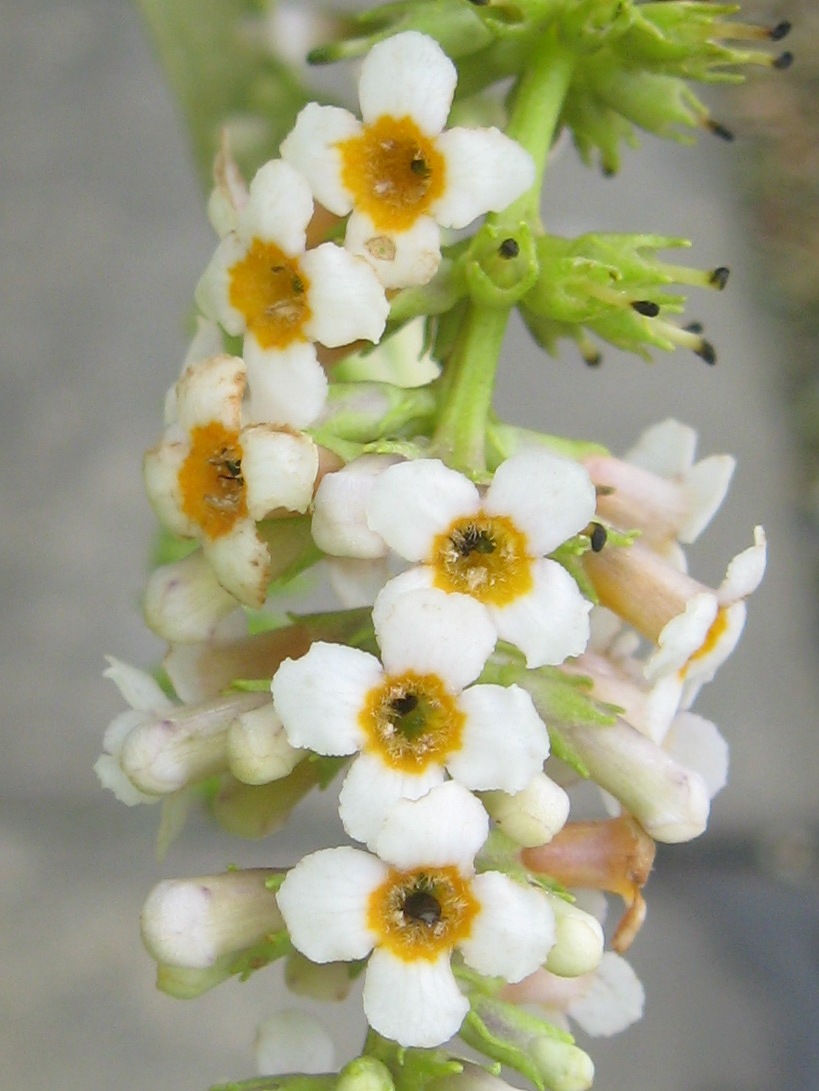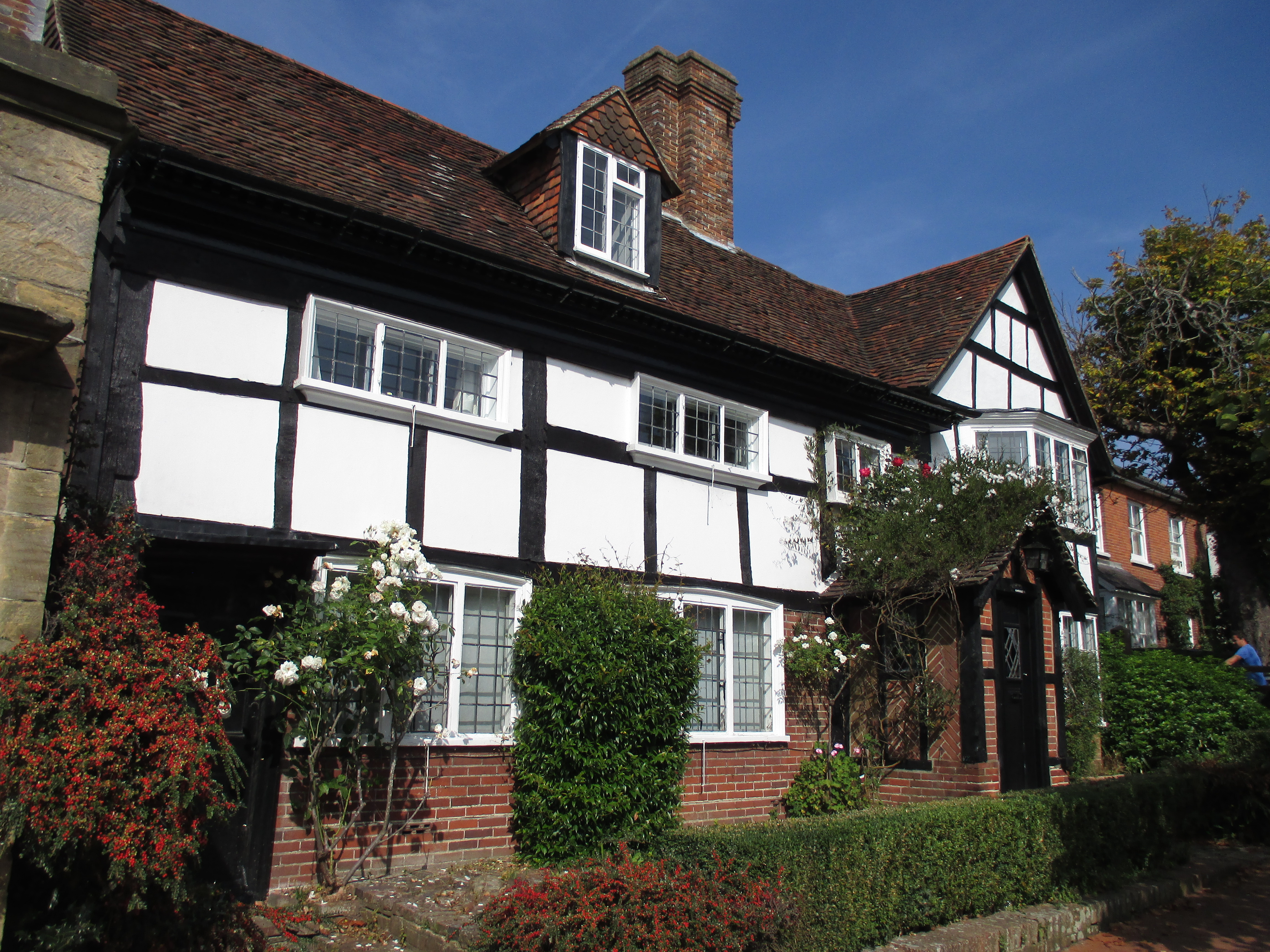|
Buddleja Forrestii
''Buddleja forrestii'' is a deciduous shrub or small tree widely distributed from India to western China. First described by Diels in 1912, he named the species for plant hunter George Forrest, who discovered the plant in Yunnan in 1904 and introduced it to Western cultivation.Stuart, D. (2006). ''Buddlejas''. RHS Plant Collector Guide. Timber Press, Oregon, USA. Bean, W. J. (1914). ''Trees and shrubs hardy in the British Isles, Vol. 1''. p. 323. 7th Ed. 1950. Murray, London. Description ''Buddleja forrestii'' grows to < 6 m in height in the wild. The branches are tetragonous, and bear lanceolate leaves, which are opposite, < 25 cm long; the undersides covered with reddish-brown hairs. The species is chiefly distinguished by its inflorescences, pendulous terminal |
Ludwig Diels
Dr. Friedrich Ludwig Emil Diels (24 September 1874 – 30 November 1945) was a German botanist. Diels was born in Hamburg, the son of the classical scholar Hermann Alexander Diels. From 1900 to 1902 he traveled together with Ernst Georg Pritzel through South Africa, Java, Australia and New Zealand. Shortly before the First World War he travelled New Guinea and in the 1930s in Ecuador. Especially his collections of plants from Australia and Ecuador, which contained numerous holotypes, enriched the knowledge of the concerning floras. His monography on the Droseraceae from 1906 is still a standard. The majority of his collections were stored at the botanical garden in Berlin-Dahlem, whose vicedirector he had been since 1913, becoming its director in 1921 until 1945. His collections were destroyed there during an air raid in 1943. He died in Berlin on 30 November 1945. Honours Several genus of plants have been named after him including; ''Dielsantha'' (from ''Campanulaceae' ... [...More Info...] [...Related Items...] OR: [Wikipedia] [Google] [Baidu] |
Stockbridge, Hampshire
Stockbridge is a small town and civil parish in the Test Valley district of Hampshire, England. It is one of the smallest towns in the United Kingdom with a population of 592 at the 2011 census. It sits astride the River Test and at the foot of Stockbridge Down. Description The town is situated on the A30 road, which once carried most of the traffic from London to Dorset, south Somerset, Devon and Cornwall in the South West, though today this route is less important than the A303 dual carriageway to the north. The bridge over the Test led to the town's name, a local legend suggested a coach stop stocked provisions, but it derives from an earlier bridge that was made of 'stocks' (tree trunks). Salisbury is by road; Winchester is by the B3049 road that joins the A30 nearby. The town's long high street was thus on a useful route between the two medieval cathedral cities. The town's civil parish has an area of . The town's street crosses the River Test, marking the border of th ... [...More Info...] [...Related Items...] OR: [Wikipedia] [Google] [Baidu] |
Flora Of China
The flora of China consists of a diverse range of plant species including over 39,000 vascular plants, 27,000 species of fungi and 3000 species of bryophytes.Wu, Z. Y., P. H. Raven & D. Y. Hong, eds. 2006. Flora of China. Vol. 22 (Poaceae). Science Press, Beijing, and Missouri Botanical Garden Press, St. Louis More than 30,000 plant species are native to China, representing nearly one-eighth of the world's total plant species, including thousands found nowhere else on Earth. China's land, extending over 9.6 million km, contains a variety of ecosystems and climates for plants to grow in. Some of the main climates include shores, tropical and subtropical forests, deserts, elevated plateaus and mountains. The events of the continental drift and early Paleozoic Caledonian movement also play a part in creating climatic and geographical diversity resulting in high levels of endemic vascular flora. These landscapes provide different ecosystems and climates for plants to grow in, creati ... [...More Info...] [...Related Items...] OR: [Wikipedia] [Google] [Baidu] |
Flora Of Myanmar
Flora is all the plant life present in a particular region or time, generally the naturally occurring (indigenous) native plants. Sometimes bacteria and fungi are also referred to as flora, as in the terms ''gut flora'' or ''skin flora''. Etymology The word "flora" comes from the Latin name of Flora, the goddess of plants, flowers, and fertility in Roman mythology. The technical term "flora" is then derived from a metonymy of this goddess at the end of the sixteenth century. It was first used in poetry to denote the natural vegetation of an area, but soon also assumed the meaning of a work cataloguing such vegetation. Moreover, "Flora" was used to refer to the flowers of an artificial garden in the seventeenth century. The distinction between vegetation (the general appearance of a community) and flora (the taxonomic composition of a community) was first made by Jules Thurmann (1849). Prior to this, the two terms were used indiscriminately.Thurmann, J. (1849). ''Essai de Phyt ... [...More Info...] [...Related Items...] OR: [Wikipedia] [Google] [Baidu] |
Flora Of Bhutan
Flora is all the plant life present in a particular region or time, generally the naturally occurring (indigenous) native plants. Sometimes bacteria and fungi are also referred to as flora, as in the terms ''gut flora'' or ''skin flora''. Etymology The word "flora" comes from the Latin name of Flora, the goddess of plants, flowers, and fertility in Roman mythology. The technical term "flora" is then derived from a metonymy of this goddess at the end of the sixteenth century. It was first used in poetry to denote the natural vegetation of an area, but soon also assumed the meaning of a work cataloguing such vegetation. Moreover, "Flora" was used to refer to the flowers of an artificial garden in the seventeenth century. The distinction between vegetation (the general appearance of a community) and flora (the taxonomic composition of a community) was first made by Jules Thurmann (1849). Prior to this, the two terms were used indiscriminately.Thurmann, J. (1849). ''Essai de Phyt ... [...More Info...] [...Related Items...] OR: [Wikipedia] [Google] [Baidu] |
Flora Of India (region)
The flora of India is one of the richest in the world due to the wide range of climate, topology and habitat in the country. There are estimated to be over 18,000 species of flowering plants in India, which constitute some 6-7 percent of the total plant species in the world. India is home to more than 50,000 species of plants, including a variety of endemics. The use of plants as a source of medicines has been an integral part of life in India from the earliest times. There are more than 3000 Indian plant species officially documented as possessing into eight main floristic regions : Western Himalayas, Eastern Himalayas, Assam, Indus plain, Ganges plain, the Deccan, Malabar and the Andaman Islands. Forests and wildlife resources In 1992, around 7,43,534 km2 of land in the country was under forests of which 92 percent belongs to the government. Only 22.7 percent is forested compared to the recommended 33 percent of the National Forest Policy Resolution 1952. The majo ... [...More Info...] [...Related Items...] OR: [Wikipedia] [Google] [Baidu] |
Buddleja
''Buddleja'' (; ''Buddleia''; also historically given as ''Buddlea'') is a genus comprising over 140 species of flowering plants endemic to Asia, Africa, and the Americas. The generic name bestowed by Linnaeus posthumously honoured the Reverend Adam Buddle (1662–1715), an English botanist and rector, at the suggestion of Dr. William Houstoun. Houstoun sent the first plants to become known to science as buddleja ( ''B. americana'') to England from the Caribbean about 15 years after Buddle's death. Nomenclature The botanic name has been the source of some confusion. By modern practice of botanical Latin, the spelling of a generic name made from 'Buddle' would be ''Buddleia'', but Linnaeus in his ''Species Plantarum'' of 1753 and 1754 spelled it ''Buddleja'', with the long i between two vowels, common in early modern orthography.Linnaei, C. (1753). ''Species plantarum''. Impensis Laurentii Salvii, Stockholm. The pronunciation of the long i in ''Buddleja'' as ''j'' is a common ... [...More Info...] [...Related Items...] OR: [Wikipedia] [Google] [Baidu] |
Chelsea Flower Show
The RHS Chelsea Flower Show, formally known as the ''Great Spring Show'',Phil Clayton, ''The Great Temple Show'' in ''The Garden'' 2008, p.452, The Royal Horticultural Society is a garden show held for five days in May by the Royal Horticultural Society (RHS) in the grounds of the Royal Hospital Chelsea in Chelsea, London. Held at Chelsea since 1912, the show is attended by members of the British Royal Family. Highlights to the Chelsea Flower Show include the avant-garde show gardens designed by leading names with Floral Marquee at the centrepiece. The Show also features smaller gardens such as the Artisan and Urban Gardens. History Great Spring Show The first Royal Horticultural Society Great Spring Show was held in 1862, at the RHS garden in Kensington. Before this date the RHS had held flower shows from 1833 in their garden in Chiswick, which themselves had been preceded by fetes. The Kensington Garden was chosen as a site because the flower shows in Chiswick were experiencin ... [...More Info...] [...Related Items...] OR: [Wikipedia] [Google] [Baidu] |
Sussex
Sussex (), from the Old English (), is a historic county in South East England that was formerly an independent medieval Anglo-Saxon kingdom. It is bounded to the west by Hampshire, north by Surrey, northeast by Kent, south by the English Channel, and divided for many purposes into the ceremonial counties of West Sussex and East Sussex. Brighton and Hove, though part of East Sussex, was made a unitary authority in 1997, and as such, is administered independently of the rest of East Sussex. Brighton and Hove was granted city status in 2000. Until then, Chichester was Sussex's only city. The Brighton and Hove built-up area is the 15th largest conurbation in the UK and Brighton and Hove is the most populous city or town in Sussex. Crawley, Worthing and Eastbourne are major towns, each with a population over 100,000. Sussex has three main geographic sub-regions, each oriented approximately east to west. In the southwest is the fertile and densely populated coastal plain. Nort ... [...More Info...] [...Related Items...] OR: [Wikipedia] [Google] [Baidu] |
Cuckfield
Cuckfield ( ) is a village and civil parishes in England, civil parish in the Mid Sussex District, Mid Sussex District of West Sussex, England, on the southern slopes of the Weald. It lies south of London, north of Brighton, and east northeast of the county town of Chichester. Nearby towns include Haywards Heath to the southeast and Burgess Hill to the south. It is surrounded on the other sides by the parish of Ansty and Staplefield formerly known as Cuckfield Rural. Aumale in Normandy has been a Twin towns and sister cities, twin town since 1993 and Karlstadt am Main, Karlstadt in Bavaria since 1998. Cuckfield is known locally for its idiosyncratic system of mayoral voting; unlimited numbers of votes can be purchased for the price of one penny each, with the winner receiving the most votes. The position is purely honorary and the money raised supports local charities. History Before the modern local government system came into operation in the late 19th century it was de ... [...More Info...] [...Related Items...] OR: [Wikipedia] [Google] [Baidu] |
Buddleja Davidii Var
''Buddleja'' (; ''Buddleia''; also historically given as ''Buddlea'') is a genus comprising over 140 species of flowering plants endemic to Asia, Africa, and the Americas. The generic name bestowed by Linnaeus posthumously honoured the Reverend Adam Buddle (1662–1715), an English botanist and rector, at the suggestion of Dr. William Houstoun. Houstoun sent the first plants to become known to science as buddleja ( ''B. americana'') to England from the Caribbean about 15 years after Buddle's death. Nomenclature The botanic name has been the source of some confusion. By modern practice of botanical Latin, the spelling of a generic name made from 'Buddle' would be ''Buddleia'', but Linnaeus in his ''Species Plantarum'' of 1753 and 1754 spelled it ''Buddleja'', with the long i between two vowels, common in early modern orthography.Linnaei, C. (1753). ''Species plantarum''. Impensis Laurentii Salvii, Stockholm. The pronunciation of the long i in ''Buddleja'' as ''j'' is a common ... [...More Info...] [...Related Items...] OR: [Wikipedia] [Google] [Baidu] |
United States Department Of Agriculture
The United States Department of Agriculture (USDA) is the United States federal executive departments, federal executive department responsible for developing and executing federal laws related to farming, forestry, rural economic development, and food. It aims to meet the needs of commercial farming and livestock food production, promotes agricultural trade and production, works to assure food safety, protects natural resources, fosters rural communities and works to end hunger in the United States and internationally. It is headed by the United States Secretary of Agriculture, Secretary of Agriculture, who reports directly to the President of the United States and is a member of the president's Cabinet of the United States, Cabinet. The current secretary is Tom Vilsack, who has served since February 24, 2021. Approximately 80% of the USDA's $141 billion budget goes to the Food and Nutrition Service (FNS) program. The largest component of the FNS budget is the Supplementa ... [...More Info...] [...Related Items...] OR: [Wikipedia] [Google] [Baidu] |






